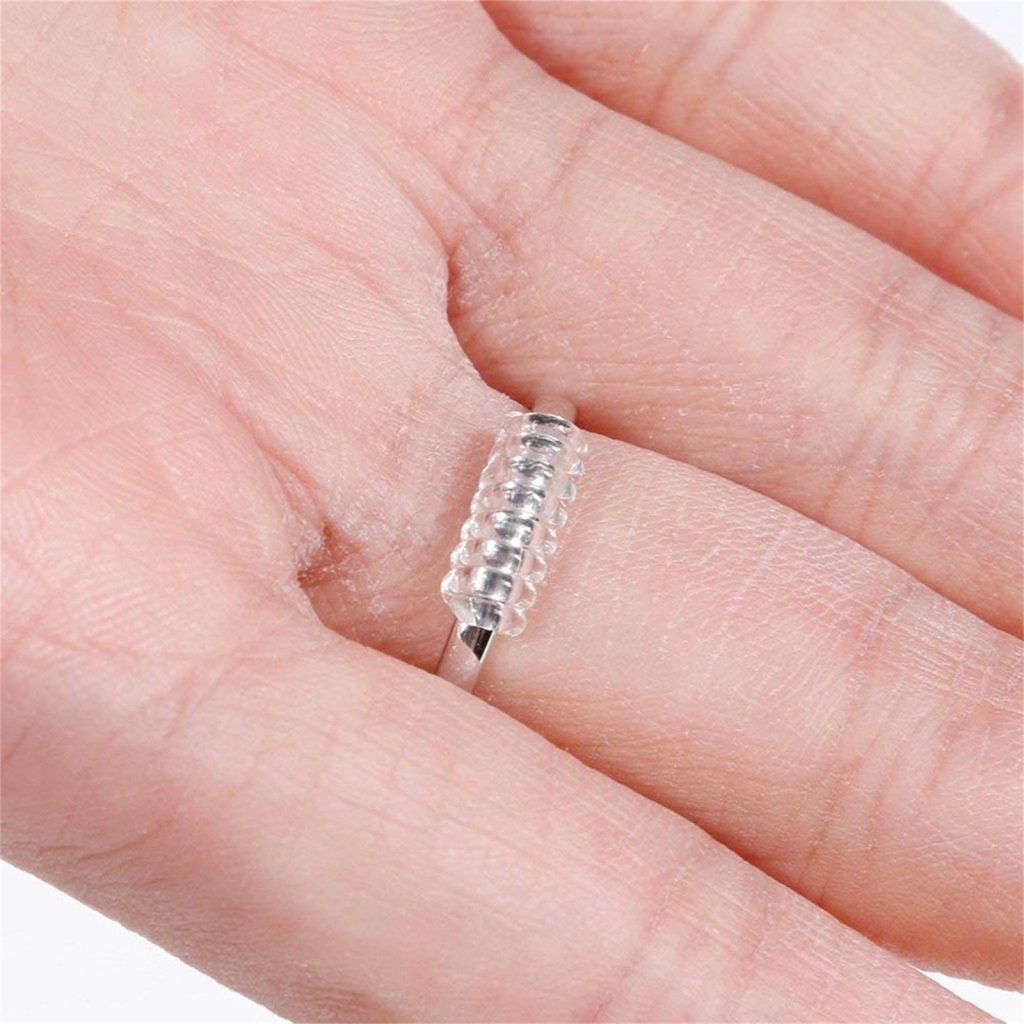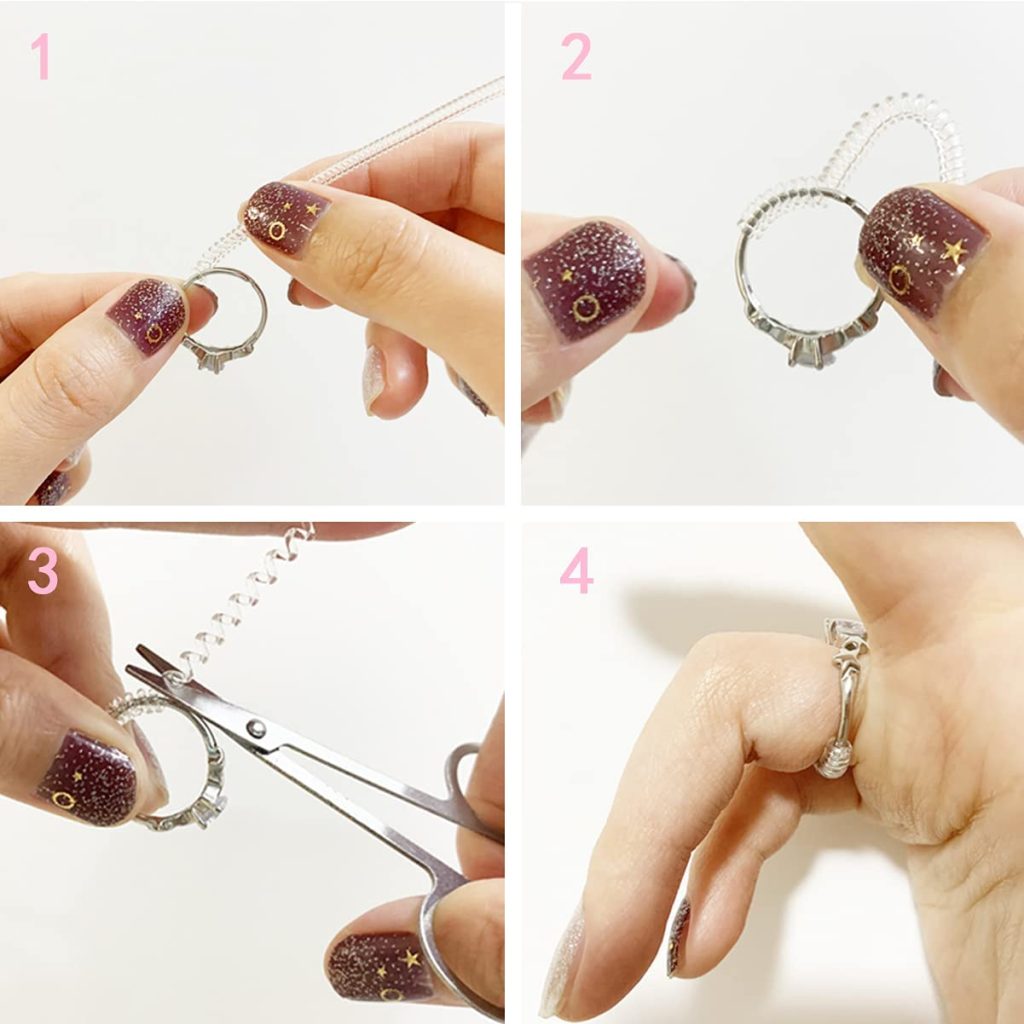Introduction
How to make a ring smaller – Making a ring smaller is a common jewelry adjustment that can be undertaken by a professional jeweler or, for those with some DIY skills and the right tools, attempted at home. It’s important to note that resizing a ring should be done carefully to avoid damaging the integrity or design of the piece, especially if it has gemstones or intricate details. Here are detailed steps and considerations for making a ring smaller:

Assess the Ring
- Determine the Needed Size Reduction: Use a ring sizer to determine your current ring size and the desired smaller size. This will give you an idea of how many sizes down you need to go.
- Check for Resizing Limitations: Some rings, especially those with channel-set stones all around or a pattern that goes all the way around, might not be suitable for resizing due to the risk of disrupting the design.
- Consider the Material: Rings made from softer metals like gold or silver are generally easier to resize than those made from harder materials like tungsten or stainless steel.
Professional Resizing
For the best results and to ensure the safety of your ring, taking it to a professional jeweler is highly recommended, especially for valuable or complex pieces.
- Consultation: The jeweler will assess the ring and advise on the best method for resizing. They may suggest cutting and resizing for solid bands or adjusting the shank for rings with stones.
- The Process: A typical resizing involves cutting the band, removing or adding metal as needed, and then soldering it back together. For reducing size, a piece of the band is usually cut out and the ends rejoined.
- Finishing Touches: After resizing, the jeweler will clean, polish, and check the ring for any weak points or misalignments.
DIY Resizing (Caution Advised)
If you’re confident in your abilities and the ring allows for it, you could attempt resizing at home. However, this is not recommended for valuable or sentimental pieces.
- Gather Tools: You’ll need a ring mandrel, pliers, a file, a jeweler’s saw (or a Dremel tool with a cutting wheel), soldering equipment, and polishing supplies.
- Mark and Cut: Place the ring on the mandrel to identify where to cut. Mark the spot with a scribe or marker. Carefully cut the band using a jeweler’s saw or Dremel.
- Resize and Solder: Remove the excess metal and file the ends smooth. Apply flux to the edges to be joined and use a torch to heat the area. Add a small amount of solder to join the ends together.
- Polish and Finish: Once cooled, file and sand the joint until smooth. Use a buffing wheel to polish the ring and hide any signs of the resizing.
Important Considerations
- Gemstone Settings: Rings with gemstones may require special care during resizing to avoid damaging the stones or their settings.
- Cost: Professional resizing typically costs between $20 and $60, depending on the complexity of the job and local rates. More complicated resizing or those involving precious metals or gems can cost more.
- Insurance: Before attempting any resizing, especially if doing it yourself, consider insuring the ring against accidental damage.
- Alternative Solutions: If resizing isn’t feasible, consider getting a ring guard or sizing beads as temporary solutions, or look into adjustable ring sizers that can be added to the band.
Remember, while DIY methods can save money, they carry risks. It’s often worth investing in professional services to ensure the longevity and beauty of your jewelry.

Determine the Proper Size:
- Professional Sizing: Visit a jeweler to accurately measure your ring size. They will use sizing tools such as a ring mandrel or ring sizer to determine the exact size needed.
- Comfort Fit: Ensure the ring is not too tight or loose. It should slide over your knuckle with a slight resistance and fit snugly on your finger without causing discomfort.
Consider Your Options:
- Jeweler Services: For valuable or intricate rings, especially those with gemstones or engravings, it’s advisable to seek professional help from a skilled jeweler. They have the expertise and tools needed to resize the ring without compromising its structural integrity.
- DIY Methods: If the ring is a simple band without gemstones or intricate designs, there are DIY methods you can try at home to resize it.
DIY Methods to Resize a Ring:
a. Tape Method:
- Materials Needed: Clear adhesive tape.
- Steps:
- Cut a small piece of clear tape (e.g., Scotch tape).
- Wrap the tape around the inside of the ring band where it contacts your finger.
- Test the fit on your finger to see if it’s snug enough.
- Trim excess tape if necessary.
b. Ring Guard or Resizer:
- Materials Needed: Ring guard or resizer (available at jewelry stores or online).
- Steps:
- Slide the ring guard onto the inside of the ring band.
- The guard typically has an adjustable mechanism to tighten or loosen to fit your finger comfortably.
- Trim any excess material if the guard is too long.
c. Bead Method:
- Materials Needed: Small silicone or plastic beads.
- Steps:
- Place a small bead(s) inside the ring band.
- The bead will act as a spacer, reducing the inner circumference of the ring.
- Test the fit on your finger and adjust the number of beads as needed for a comfortable fit.
Professional Resizing by a Jeweler:
- Evaluation: Take your ring to a reputable jeweler for resizing.
- Methods Used: Jewelers may resize rings by cutting the band and removing excess material, or by adding sizing beads inside the band to adjust the fit.
- Considerations: Rings with gemstones or intricate designs may require more complex resizing techniques to maintain their aesthetic and structural integrity.
After Resizing:
- Check Fit: After resizing, ensure the ring fits comfortably and securely on your finger.
- Comfort: It should slide over your knuckle smoothly without being too loose once on your finger.
- Final Adjustments: If necessary, make final adjustments to ensure the fit is perfect.
Maintenance and Care:
- Regular Checks: Periodically check the fit of your ring, as finger sizes can change over time.
- Cleaning: Keep your resized ring clean by gently washing it with mild soap and water.
- Professional Maintenance: For valuable rings, schedule regular inspections and maintenance with a jeweler to ensure the integrity of the resizing.
By following these steps, you can resize a ring to fit your finger comfortably and securely, whether you choose a DIY method or seek professional assistance from a jeweler. Always prioritize comfort and ensure the ring fits well before wearing it regularly.

Making a Ring Larger
Spacer Method
If the increase in size is minimal:
- Measure the Gap: Determine how much larger the rings needs to be.
- Create Spacer: Cut a thin strip of the same metal as your rings (or a similar one that won’t cause an allergic reaction) to fit the gap.
- Soldering: Solder the spacer onto the rings, making sure it’s securely attached and flush with the band. This step requires soldering equipment and experience.
- Polish and Smooth: Finish by polishing the rings to hide any signs of soldering and ensure a comfortable fit.
Stretching
For mild resizing and plain metal bands:
- Protect the Rings: Wrap masking tape around the area you plan to stretch to prevent scratches.
- Use a Mandrel: Place the rings on the mandrel slightly below your target size.
- Gently Stretch: Tap gently around the entire circumference of the rings with a hammer, rotating the rings after each tap. This will gradually stretch the metal. Be cautious not to overstretch or deform the shape.
Important Considerations
- Practice Caution: Always wear safety goggles and handle tools carefully.
- Check Fit Regularly: Throughout the resizing process, frequently check the fit against a rings sizer to avoid over-adjusting.
- Professional Help: If you’re unsure about any step or working with a valuable ring, consult a professional jeweler. Mistakes can be costly and damaging.
Remember, while DIY resizing can be a fun challenge, it’s not suitable for all types of rings. Complex designs, gemstone settings, or valuable pieces are best left to the experts. Enjoy the process but prioritize preserving the integrity and value of your jewelry.
